10 Rotisserie Myths That Mislead and 5 Facts That’ll Change How You Shop

Rotisserie chicken is the unsung hero of quick dinners, lunch prep, and lazy night snacking—but there’s a lot of confusion surrounding these golden birds. Some people swear they’re healthy, others think they’re loaded with mystery ingredients. Here are 10 common myths that lead shoppers astray—and 5 facts that’ll actually help you shop smarter next time you pass that warm, delicious-smelling display.
1. Myth 1: They’re Always Fresh Out of the Oven
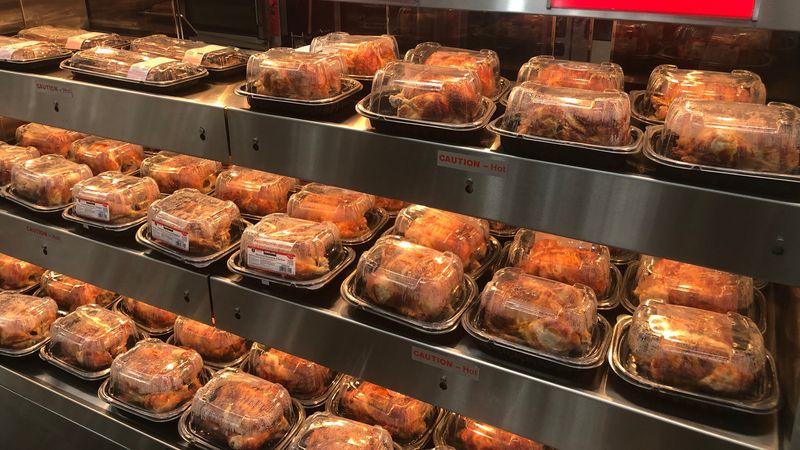
Consumers often imagine rotisserie chickens as freshly cooked, but reality may differ. These birds can sit under heat lamps for hours, losing their juicy appeal. Grocery stores don’t always replenish them as quickly as customers assume, meaning freshness isn’t guaranteed. It’s not uncommon for chickens to dry out over time, reducing their flavor profile.
Checking for signs of dryness and asking staff about their restocking schedule can guide better choices.
Remember, appearance might be deceiving when it comes to these convenient meals—what looks golden may be far from fresh.
2. Myth 2: Healthier Than Fried Chicken

Rotisserie chickens are often seen as the healthier option compared to their fried counterparts. Yet, many are injected with sodium solutions and coated in sugary seasonings, potentially packing as much sodium as fast food. This perception of healthiness can be misleading.
For those watching their sodium intake, it’s crucial to read labels thoroughly. The flavorful exterior might hide health concerns beneath.
While convenient, these chickens aren’t always the diet-friendly choice they appear to be. Seasoned with care, they can be a tasty, yet misleading, meal.
3. Myth 3: All Store Brands Taste the Same

The assumption that all store-bought rotisserie chickens taste the same is far from reality. Flavors and textures can vary greatly depending on where they’re purchased. Some stores offer juicy, well-seasoned birds, while others present drier, less appealing options.
Exploring different brands can lead to discovering a favorite, but it requires some trial and error.
Local chains might have unique recipes that set them apart. Next time, consider sampling different stores’ offerings for a diverse taste experience.
Taste isn’t uniform, and exploration can reveal hidden gems.
4. Myth 4: They’re Preservative-Free

The belief that rotisserie chickens are free from preservatives is a common misconception. Many contain phosphates, MSG, or other additives designed to enhance texture and prolong shelf life. These ingredients might surprise those assuming a natural product.
Reading the ingredients list can reveal unexpected additions that may concern health-conscious consumers.
While preservatives help maintain flavor and freshness, they also contribute to the processed nature of these birds. It’s wise to be informed about what goes into these seemingly simple meals.
5. Myth 5: Cooked In-Store From Raw

The notion that all rotisserie chickens are cooked in-store from raw is misleading. Some are pre-cooked off-site and merely reheated before hitting the display. This process can affect flavor and texture, leaving some chickens less fresh than expected.
For those seeking the freshest options, inquiring about cooking practices at your local store is essential.
Understanding how these meals are prepared can influence purchasing decisions and overall satisfaction.
Not all rotisserie chickens are created equal, and knowing their journey can inform smarter shopping.
6. Myth 6: They’re Gluten-Free By Default
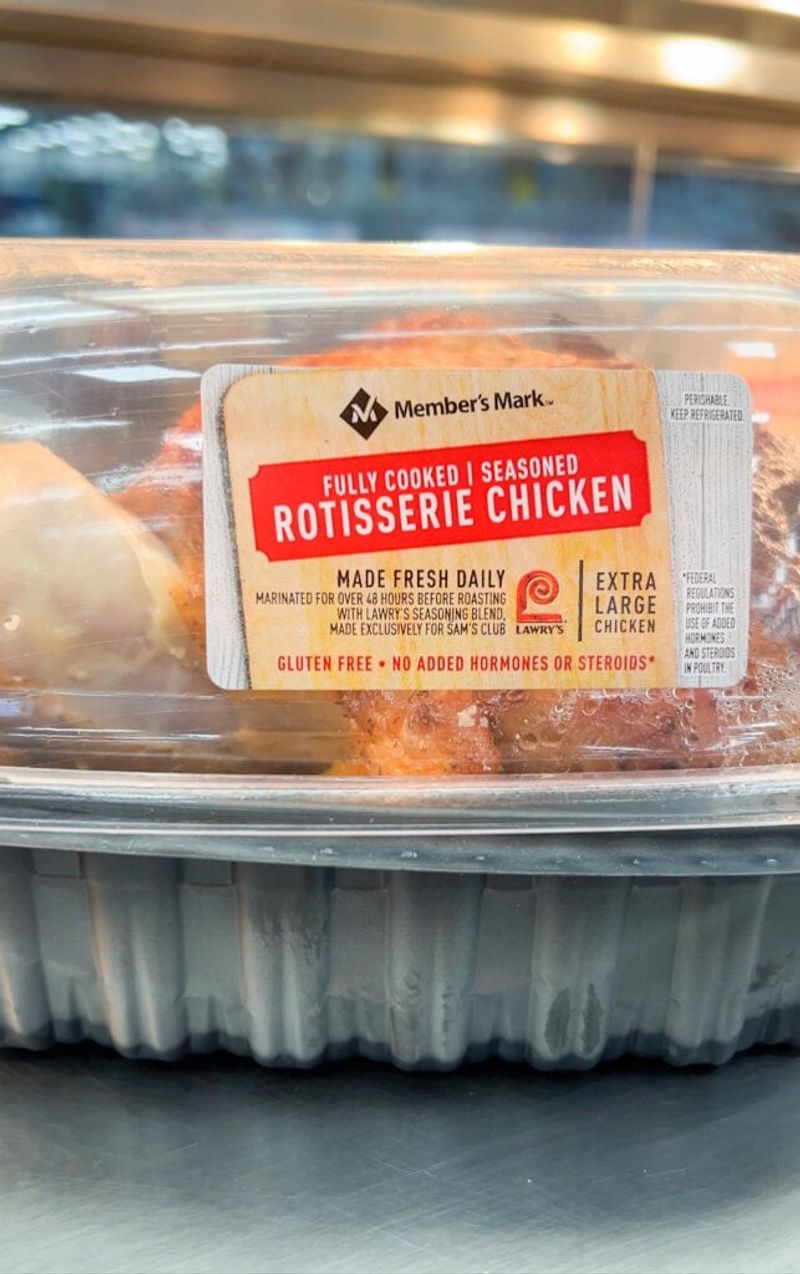
Many believe rotisserie chickens are inherently gluten-free, yet this isn’t always true. Some contain wheat or gluten in their marinades or seasonings, posing a risk to those with sensitivities or allergies.
Checking labels for gluten-related ingredients is crucial for those who must avoid it.
Unseen gluten can turn a convenient meal into a dietary dilemma.
For a worry-free experience, consumers should be proactive in reading labels and asking questions. This myth serves as a reminder that not all seemingly simple foods are straightforward.
7. Myth 7: Only the Skin Has Seasoning

The belief that only the skin of rotisserie chicken contains seasoning is misleading. Many are brined or injected with seasoning blends, ensuring flavors penetrate deeply into the meat, not just the exterior.
This technique enhances taste but can also increase sodium levels, something to be aware of for health-conscious buyers.
Understanding this can lead to more informed choices, especially for those monitoring their dietary intake.
The seasoning reaches beyond the surface, making these chickens both flavorful and potentially deceptive.
8. Myth 8: It’s Cheaper to Make Your Own
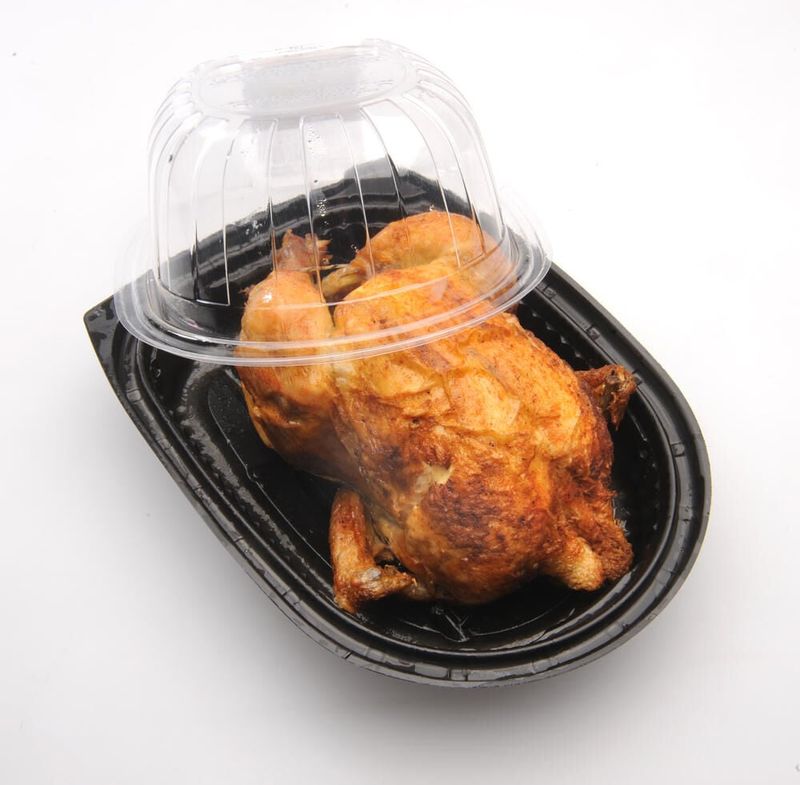
Many assume making a rotisserie chicken at home saves money, but store-bought options can be surprisingly economical. Often priced lower than buying and roasting a raw bird, especially when on sale, they offer convenience and cost-effectiveness.
Homemade requires time, effort, and additional ingredients, which can add up.
For busy individuals, store-bought provides a ready-to-eat solution without breaking the bank.
Evaluating the cost versus effort reveals rotisserie chickens as a budget-friendly choice for those seeking convenience without a hefty price tag.
9. Myth 9: Organic Means No Additives

The term “organic” can mislead consumers into believing such rotisserie chickens contain no additives. However, even organic birds might include injected broths or flavor enhancers. Organic refers to raising methods, not seasoning practices.
Labels should be examined carefully to understand what organic truly entails in this context.
For those prioritizing additive-free options, being informed is key.
The organic label promises certain standards but doesn’t guarantee a completely natural seasoning process, making it essential to read beyond the surface.
10. Myth 10: Leftovers Should Be Thrown Out the Next Day

Believing rotisserie chicken leftovers must be discarded the next day is incorrect. Properly stored, these chickens remain safe to eat for 3–4 days and can even be frozen to extend their usability.
Storage in airtight containers helps maintain freshness and flavor.
For those who enjoy meal prep, utilizing leftovers smartly can transform a single purchase into multiple meals.
This myth highlights the importance of proper storage techniques, ensuring nothing goes to waste and maximizing the value of each chicken bought.
11. Fact 1: Day-Old Chickens Sold as Pulled Meat
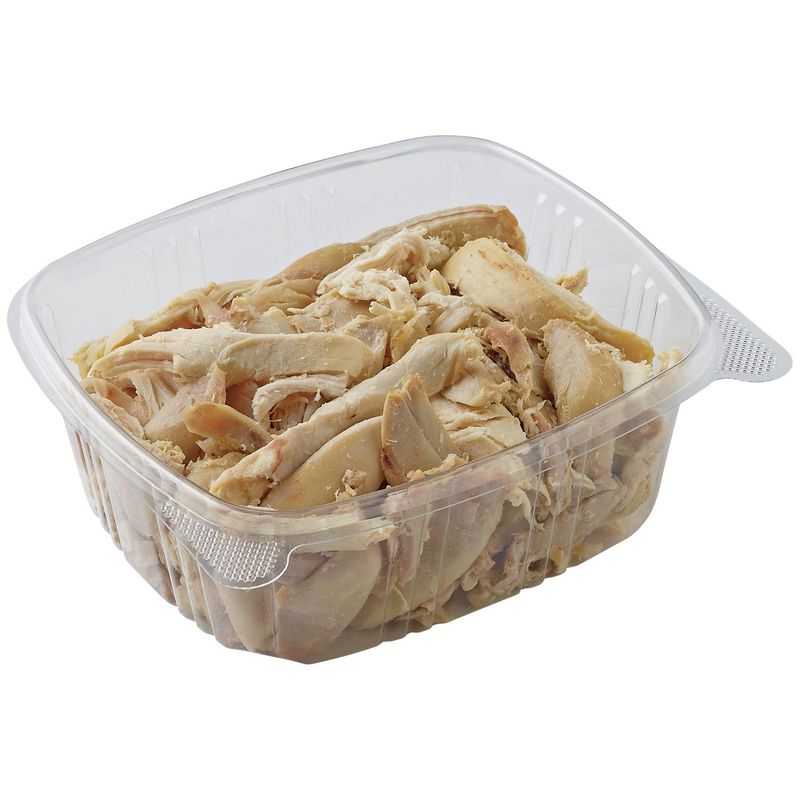
In some stores, day-old rotisserie chickens are repurposed and sold as pulled meat. This option offers a tasty, discounted alternative for those who don’t mind consuming slightly older products.
Pre-shredded chicken found in the deli section provides convenience for quick meals.
For shoppers who enjoy saving money without sacrificing quality, this fact can be a game-changer.
Next time you see pre-packaged pulled chicken, consider its origins—it just might be yesterday’s bird finding new life in your meal.
12. Fact 2: Costco’s Bird – Larger and Cheaper

Costco’s rotisserie chicken has gained fame for its larger size and lower price, standing at $4.99. It’s not just the cost that attracts buyers; its flavor and juiciness often rank higher compared to standard grocery store offerings.
This fact highlights the retailer’s focus on quality and customer satisfaction.
For families or individuals seeking more for their money, Costco’s bird offers size and taste in one affordable package.
The popularity of Costco’s chicken showcases how shoppers can find both value and quality in unexpected places.
13. Fact 3: Seasoning Can Double the Sodium Content

Opting for seasoned rotisserie chicken can significantly increase sodium content, sometimes doubling it compared to unseasoned varieties. Herbed or BBQ-glazed options may taste more flavorful, but they come with health trade-offs.
For those watching their sodium intake, choosing plain versions offers a safer choice without sacrificing too much flavor.
Understanding this fact can lead to healthier decisions in the grocery aisle.
Seasoning may enhance taste, but it also adds another layer to consider for those mindful of dietary intake.
14. Fact 4: Carcass for Homemade Broth
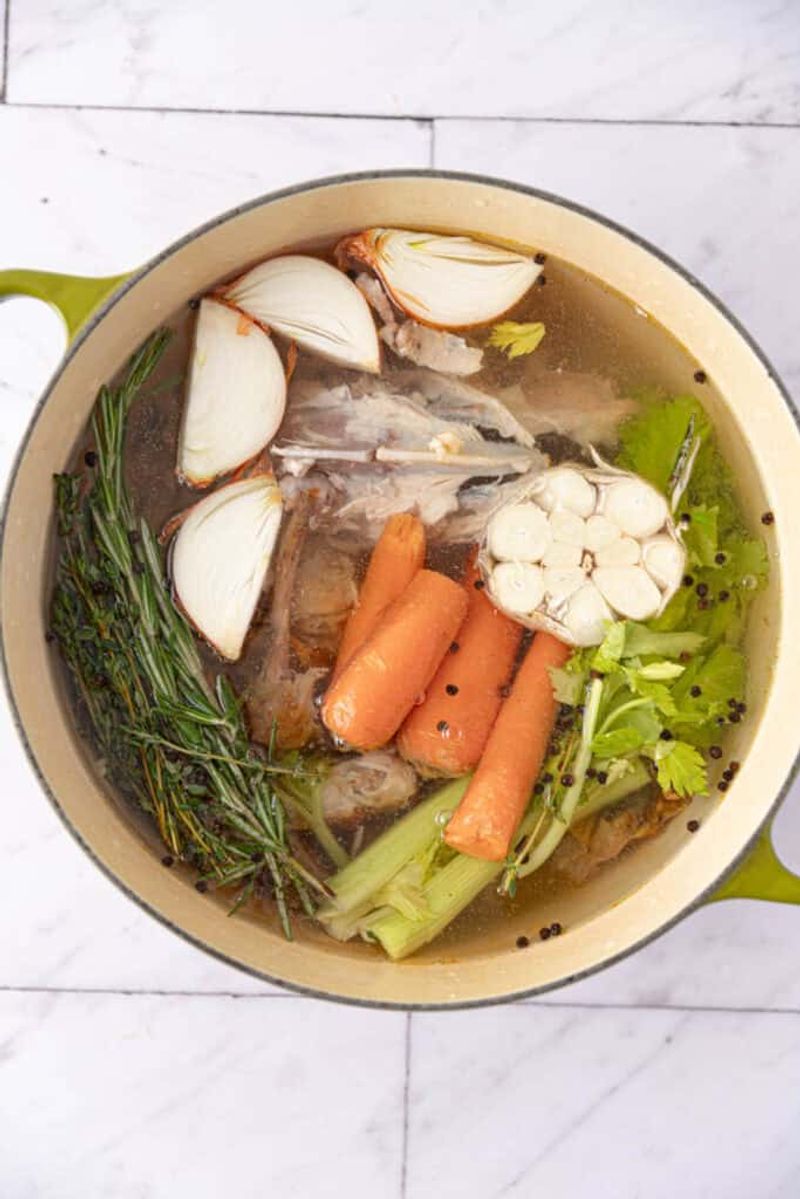
Transforming rotisserie chicken leftovers into homemade broth is a smart way to extend their use. Simmering the carcass with vegetables and herbs creates a flavorful, nutritious base for soups and stews.
This practice not only reduces waste but also provides an economical way to enhance other dishes.
For those who enjoy cooking, making broth is an easy step that adds depth to meals.
This fact underscores the versatility of rotisserie chicken and the creative possibilities of turning one purchase into multiple culinary experiences.
15. Fact 5: Not All Chickens Equal in Calories

Caloric content in rotisserie chickens varies widely, particularly between BBQ-glazed or teriyaki versions and plain ones. The added sugar and oil in flavored chickens can pack 400+ extra calories.
For those mindful of calorie intake, plain chickens provide a leaner option without flavor sacrifices.
Being aware of these differences aids in making balanced dietary choices.
This fact emphasizes the importance of examining nutritional labels, ensuring that convenience doesn’t overshadow nutritional goals when selecting these popular meals.
